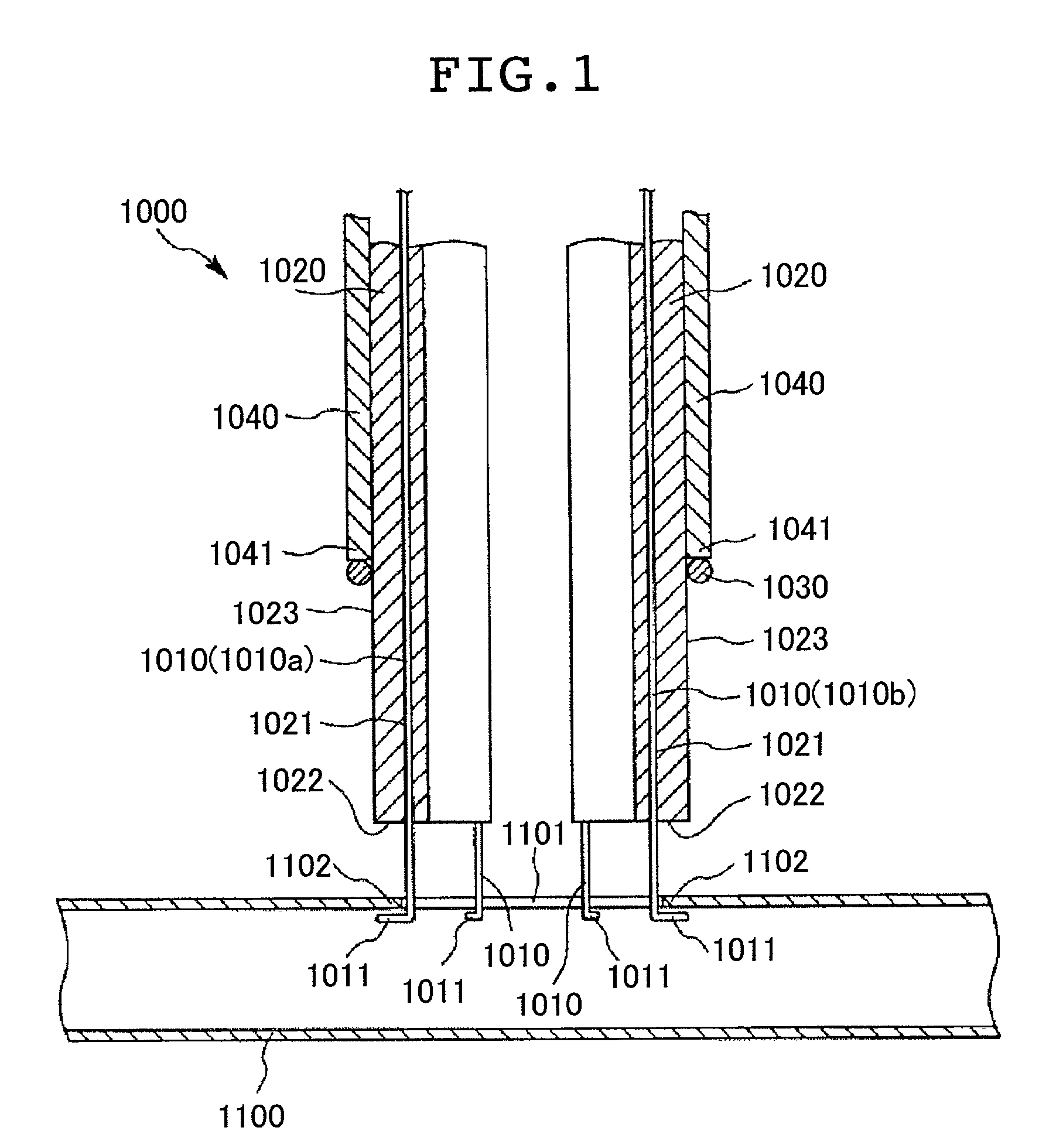End-to-side blood vessel anastomosis method and instruments therefor
a blood vessel and end-to-side technology, applied in the field of end-to-side blood vessel anastomosis method and instruments therefor, can solve the problems of high patient stress, blood vessel dissection with tweezers or the like, and difficult to carry out anastomosis of coronary artery bypass graft,
- Summary
- Abstract
- Description
- Claims
- Application Information
AI Technical Summary
Problems solved by technology
Method used
Image
Examples
first embodiment
[0083] First Embodiment
[0084] FIGS. 1 to 6 are each a longitudinal cross sectional view showing a blood vessel connecting instrument for use in an end-to-side blood vessel anastomosis method according to a first embodiment of the present invention. FIG. 7 is a perspective view showing a structure of a distal end portion of a blood vessel connecting instrument for use in an end-to-side blood vessel anastomosis method according to a first embodiment of the present invention. FIG. 8 is a plan view showing an engaging member for use in an end-to-side blood vessel anastomosis method according to the first embodiment of the present invention, illustrating a state in which the engaging member is attached to an opening of a blood vessel. FIG. 9 is partial side view showing structures of a blood vessel supporting member and a receiving member in the blood vessel connecting instrument for use in an end-to-side blood vessel anastomosis method according to the first embodiment of the present in...
second embodiment
[0126] Second Embodiment
[0127] FIG. 11 is a perspective view showing a blood vessel supporting instrument for use in the end-to-side blood vessel anastomosis method according to a second embodiment of the present invention. FIGS. 12 to 18 are schematic perspective views, respectively, illustrating in sequence the end-to-side blood vessel anastomosis method using this blood vessel supporting instrument according to a second embodiment of the present invention. In the following explanation, the upper side and lower side in FIG. 1 are referred to as "proximal end" and "distal end", respectively.
[0128] First, the blood vessel supporting instrument for use in the end-to-side blood vessel anastomosis method according to a second embodiment of the present invention will be illustrated in detail with reference to FIG. 11.
[0129] A blood vessel supporting instrument 2A shown in FIG. 11 comprises a pair of plate-like arm portions 21a and 21b and needle portions 22a and 22b provided on the dist...
third embodiment
[0155] Third Embodiment
[0156] FIG. 19 is a perspective view showing a blood vessel supporting instrument for use in the end-to-side blood vessel anastomosis method according to a third embodiment of the present invention. In the following explanation, the upper side and lower side in FIG. 19 are referred to as "proximal end" and "distal end", respectively.
[0157] The method of the third embodiment is the same as the method of the previous embodiments except that a blood vessel supporting instrument 2B shown in FIG. 19 is used.
[0158] Hereinafter, the method of the third embodiment will be illustrated in detail with reference to FIG. 19. The explanation will be centered on the differences from the methods of the previous embodiments and the explanation on the same or like matter will be omitted.
[0159] The blood vessel supporting instrument 2B shown in FIG. 19 is the same as the blood vessel supporting instrument 2A according to the second embodiment above except that an elastic member ...
PUM
 Login to View More
Login to View More Abstract
Description
Claims
Application Information
 Login to View More
Login to View More - R&D
- Intellectual Property
- Life Sciences
- Materials
- Tech Scout
- Unparalleled Data Quality
- Higher Quality Content
- 60% Fewer Hallucinations
Browse by: Latest US Patents, China's latest patents, Technical Efficacy Thesaurus, Application Domain, Technology Topic, Popular Technical Reports.
© 2025 PatSnap. All rights reserved.Legal|Privacy policy|Modern Slavery Act Transparency Statement|Sitemap|About US| Contact US: help@patsnap.com



